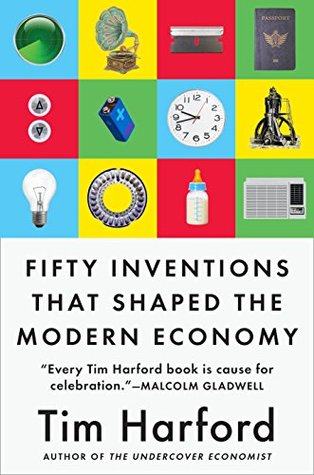More on this book
Community
Kindle Notes & Highlights
by
Tim Harford
Read between
October 31 - November 1, 2017
When farming was well established—two thousand years ago in Imperial Rome, nine hundred years ago in Song dynasty China—these farmers were five or six times more productive than the foragers they had replaced.
Agricultural abundance creates rulers and ruled, masters and servants, and inequality of wealth unheard of in hunter-gatherer societies.
The development of the moldboard plow turned Europe’s natural endowment of fertile land on its head. People who lived in Northern Europe had long endured difficult farming conditions, but now it was the north, not the south, that enjoyed the best and most productive land.
So one theory—speculative but intriguing—is that the plow intensified men’s policing of women’s sexual activity. If that was an effect of the plow, it’s been slow to fade.
In 1770, for instance, a famine in Bengal clobbered the company’s revenue. British legislators saved it from bankruptcy by exempting it from tariffs on tea exports to the American colonies. Which was, perhaps, shortsighted on their part: it eventually led to the Boston Tea Party, and the American Declaration of Independence.7 You could say the United States owes its existence to excessive corporate influence on politicians.
To create those conditions on a scale sufficient to produce 160 million tons of ammonia a year—the majority of which is used for fertilizer—the Haber-Bosch process today consumes more than 1 percent of all the world’s energy.
Eyjafjallajökull reduced global output by nearly $5 billion.
For the aviation industry, that story starts with the invention of the death ray. No, wait—it starts with an attempt to invent the death ray.
Galvanism briefly fascinated the public, inspiring Mary Shelley to write her story of Frankenstein’s monster.
In Roman times, lead pipes carried water (the Latin for lead, plumbum, gave us the word “plumber”).
No wonder that across the world, more antibiotics are injected into healthy animals than sick humans.
Koreans were ditching their entire method of writing to make printing easier, cutting tens of thousands of characters down to just twenty-eight.
Parchment was pricey: a parchment Bible required the skins of 250 sheep.
Many Roman brick buildings are long gone—but not because the bricks themselves have decayed. They’ve been cannibalized for parts. Roman bricks can be used to make modern buildings. But the concrete Pantheon? One of the reasons it has survived for so long is because the solid concrete structure is absolutely useless for any other purpose.
A baby born in the least propitious countries today—such as Burma, Haiti, and the Democratic Republic of the Congo—has a better chance of surviving infancy than any baby born in 1900.


